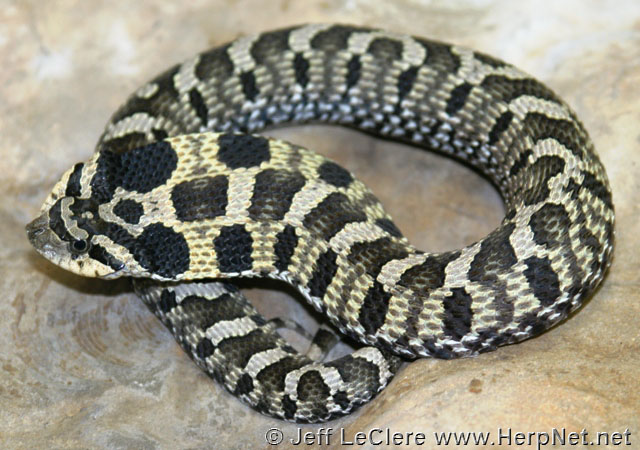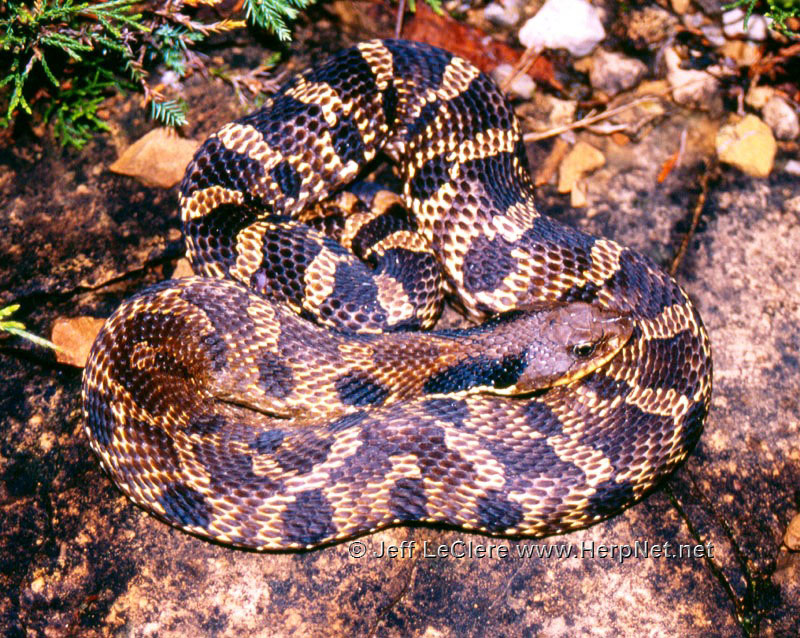Eastern Hog-nosed Snake (Heterodon platirhinos)
Alternate names: Eastern Hognose Snake
by Jeff LeClere
Status
Protected and Species of Greatest Conservation Need. Eastern hog-nosed snakes have no special status in Iowa. Another common name for this snake is eastern hognose snake. A former spelling of the scientific name was platyrhinos.
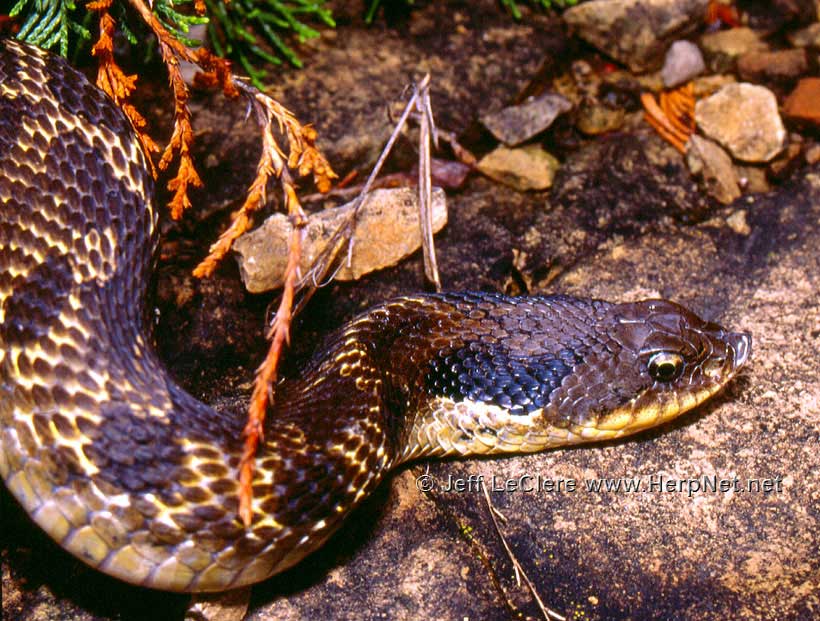
Description
Harmless to humans. This is a medium to large Iowa snake that may be 24 to 46 inches long and has a very stout body. They are rather variable in pattern and color; two phases may be found: spotted and solid. Spotted specimens have a brown or yellow ground color with darker brown or black blotches. These alternate with smaller dark spots on the sides. The blotches may turn into rings on the tail. There may be red or orange pigment in the skin between the scales, and this pigment may occasionally infringe upon the scales themselves. In some populations, adults are a solid color that may or may not have remnants of blotches. The ground color on solid individuals may be black, gray, or olive. Olive is the most common solid color phase in Iowa.
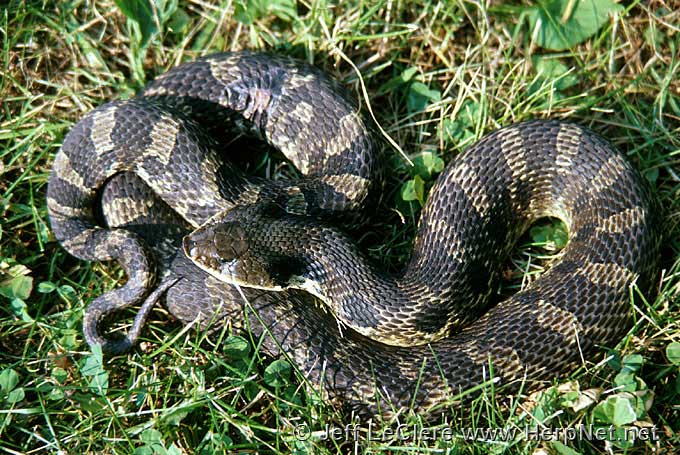
The labials are light colored on all the variations. Regardless of dorsal coloration or pattern, the belly is yellow, gray, or pinkish, sometimes with gray or greenish mottling. The underside of the tail is always light colored (not black). Eastern hog-nosed snakes always have a dark longitudinal blotch behind each eye extending some distance onto the neck. These blotches are usually black in eastern hog-nosed snakes, not brown as in its cousin, the plains (western) hog-nosed snake. The plains hog-nosed snake also has a light anal plate and the underside of the tail is black; the same color as the belly. The eastern hog-nosed snake’s underside of the tail is usually lighter than the belly, and not black. The rostral scale is enlarged, pointed, and keeled, just as in the plains hog-nosed snake, but it is not as upturned. The scales are keeled, and the anal plate is divided.
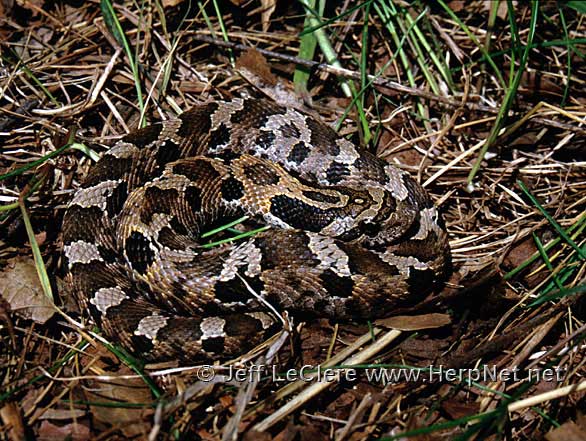
Subspecies
There are no recognized subspecies of the eastern hog-nosed snake, Heterodon platirhinos.
Range
In Iowa, eastern hog-nosed snakes are found statewide, except for the north central region.
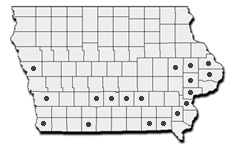
Habitat
Eastern hog-nosed snakes are not as choosy about their habitats as their western cousins. Heavily wooded areas, prairies, and grasslands are common habitats. They are even found on bluff prairies on occasion. Like plains hog-nosed snakes, however, these snakes prefer sandy or loamy soil in which to burrow. Eastern hog-nosed snakes can be found with plains hog-nosed snakes where their ranges overlap in Iowa (Berberich, Dodge, and Folk, 1971; Christiansen, 1983). Easterns also adapt to many other habitat types than plains and therefore are more widespread and common in Iowa. Eastern hog-nosed snakes are found in more damp situations as they feed heavily upon amphibians. They are also found under flippable cover (as that afforded by rocky hillsides or logs) more often than the plains hog-nosed snakes, although still rarely.
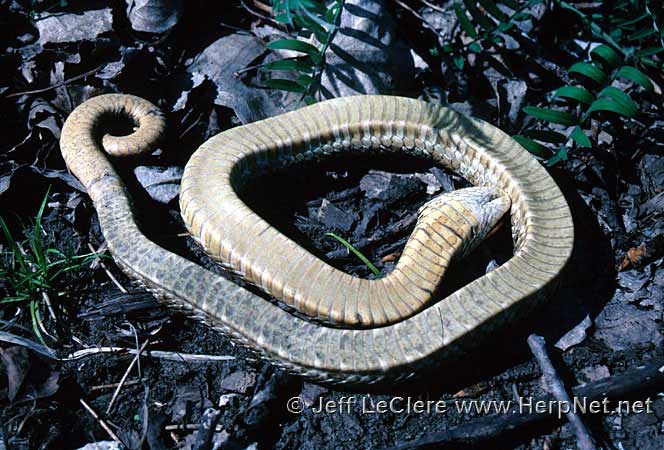
Habits
The eastern hog-nosed snake will fan its head and neck much like a cobra when alarmed. Loud and prolonged hissing is accompanied by short jabs with the head as often away from the attacker as toward it. The snake will not open its mouth to bite, and hog-nosed snake bites originating from defense are rare. Even a large 43 inch specimen I found in Johnson County would not bite, but it acted as though it would.
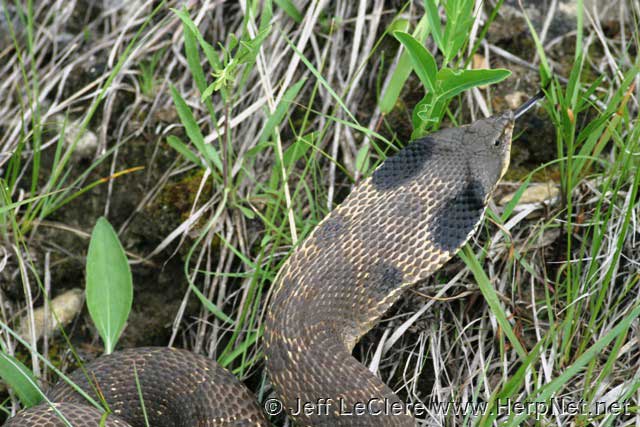
If the attacker continues to press upon the hog-nosed snake, it will open its mouth, writhe as if in pain, and finally roll onto its back with its mouth open and tongue hanging out. It cannot be induced to move. Because the snake keeps its mouth open during the entire death scene, lining at the back of the mouth closes off the opening to the esophagus to prevent the swallowing of dirt. This is also aided by an increase in saliva production, which may run out of the mouth (readily seen when the snake is picked up), taking much of the dirt with it. If it is righted, it immediately rolls onto its back again. Not until the snake feels safe will it right itself and continue on with its normal activities. Eastern hog-nosed snakes are more elaborate with their act than the plains hog-nosed snake, and even though they will perform the action in captivity for a longer period of time, they soon stop in captivity.
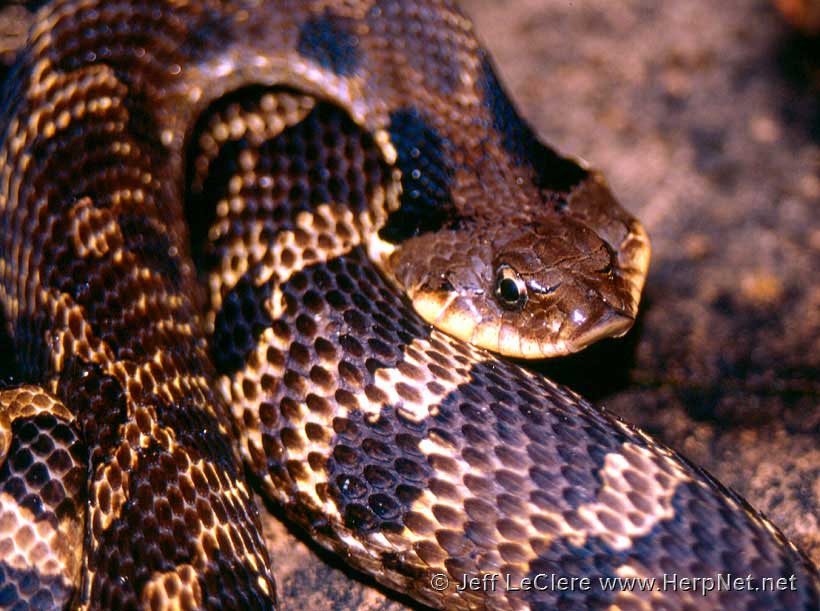
Eastern hog-nosed snakes are diurnal and actively hunt for food. They may be observed basking in early morning and again at dusk. They are one of the few snakes that dig their own burrows, although they do not live in them for prolonged periods of time. Logs, rocks, boards, and other cover are used, especially just before shedding.
These snakes breed in the spring. They are oviparous and lay 10 – 30 eggs in a sandy area. The eggs hatch in about two months and the young are 5 – 12 inches at hatching. They are much brighter colored than the adults. Eastern hog-nosed snakes overwinter from October to late April in mammal or self-constructed burrows.
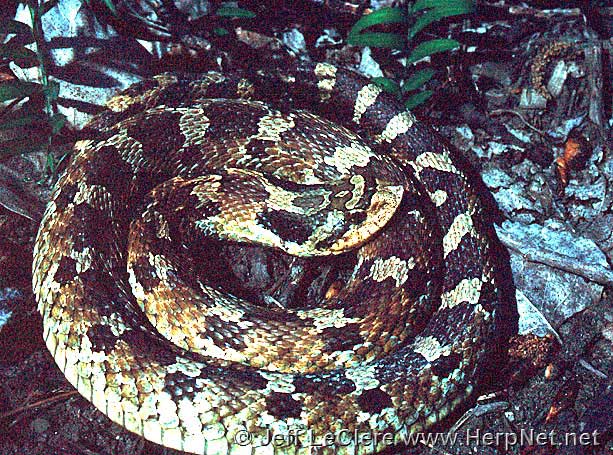
Food
Eastern hog-nosed snakes consume amphibians, mainly toads, and use their snout to dig them up as toads spend much time in self-made burrows. They also consume small mammals, birds, birds’ eggs (ground nesters), insects, lizards, snakes, reptile eggs, and carrion. They are immune to the toxic secretions that toads produce via the parotoid glands due to enlarged adrenal glands. Eastern hog-nosed snakes are not constrictors and swallow their prey alive.
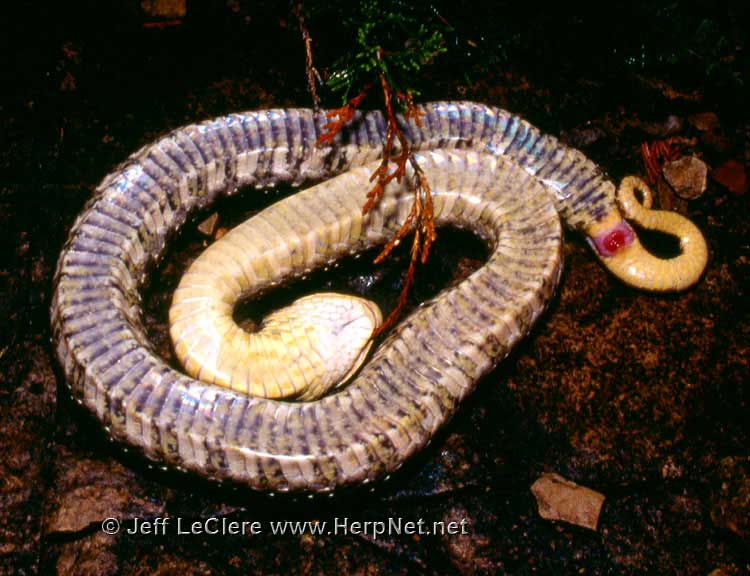
There is great controversy as to the venomous or toxic nature of North American hog-nosed snakes. Most often, bites produce no effects in humans, and medically significant or clinical bites from North American hog-nosed snakes are rare, produce only temporary local effects, and are usually caused by a feeding response in captive specimens. Most of the debate is perpetuated and complicated by the lack of agreement and/or understanding of various terms such as “venomous”, “toxicity”, “fangs”, “allergy”, etc. Though polemic, the vast majority of informed people agree that North American hog-nosed snakes should be considered harmless to humans.
